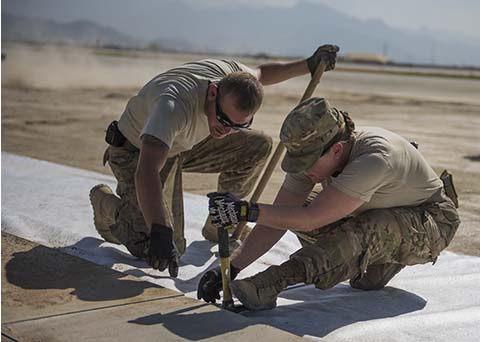
Reverse engineering can be described as a method or process used to create and understand previously created devices, processes, systems, and software. These methods are used in both military and commercial espionage. This technique is used in many industries to gain access and improve their products. Although it is legal, it may not be ethical.
Reverse engineering refers to a process.
Reverse engineering involves breaking something down to its basic parts. It is a way to improve the product or get a better understanding. This can be helpful when companies want to recreate a product or part of a product. It can also help recover lost designs.
It is legal
Reverse engineering can be described as a way to learn about a product or process from an outside perspective. This involves deconstructing programs or getting specifications to create similar programs. This practice can be considered legal. But, before you pursue this practice, there are a few things to remember. First, the person must be honest and fair in acquiring the product. If the acquisition or process of a product is detrimental to its original value, it is not fair use.

It can also be used for commercial and military espionage
Reverse Engineering can be used to accomplish many things, including military or corporate espionage. It can also be used in order to save CAD data, particularly in the case of a loss. It can also help protect cultural relics. In addition, reverse engineering can help improve product documentation. Reverse engineering can be used to repair or replace damaged parts. In some cases, it is required when the original manufacturer is no longer supporting the product.
It could be funded by government
The government may fund a reverse engineering project. This is a technique for creating new products by using existing components. Companies looking to invent can take advantage of the large pool of skilled workers available in developing countries. They also have low salaries and a high level of skill. The cost of creating products is also much lower than in developed nations. Reverse engineering projects require companies to adhere to a set design principle.
It is a multi-step process
Engineering reverse refers to the reproduction of an object using computer-aided modeling (CAD) software. The goal of the process is to replicate an object's features and dimensional accuracy. The process also allows users the ability to modify and create a manufacturing blueprint.
It is software.
Reverse engineering refers to the process of extracting system abstractions, design information, and code from a piece or software program so it can be reused. This involves identifying artifacts such as code and user interface that make up a software system. The information can then be used by reverse engineers to develop new software.

It is a team-based procedure
Engineering reverse is a team-based method that transforms a design from a physical model into a 3D model. The team then performs a variety of tasks in the 3D model, such as filling holes and creating primitives. Engineers can then use this data to create new parts. Reverse engineering is also used in competitor analysis and design development.
FAQ
What is the hardest engineering major?
Computer science is by far the most challenging engineering major. You have to learn everything from scratch. You also need to know how to think creatively.
Programming languages such as C++, JavaScript and PHP will be required to comprehend.
You'll also need to know how computers work. Understanding hardware, software architecture, running systems, networking, databases and algorithms is essential.
Computer Science is an excellent option for engineers who want to study.
How long does an Engineer take?
There are many ways to get into engineering. Some people study immediately after high school graduation, while others go to college to further their education.
Some students will enter a degree programme straight out of high school while others will enroll in a two-year foundation program.
After completing this, they might continue onto a three or four-year honors degree. You could also opt for a masters degree.
Before you decide which route to take, think about your career goals once you are done with school. Do you plan to continue in education or enter the workforce?
The time required to complete each stage depends on the university where you study and whether it is a full-time program or a part-time one.
There is no direct correlation between the time it takes to complete a qualification and the experience you have after graduation. Even though you may only have one year of college, this doesn't guarantee that you will be able to use all the skills required to work as an engineer.
What does a Chemical Engineer Do?
Chemical engineers employ math, science engineering, technology, as well as business skills to develop chemical processes and products.
Chemical engineers are able to specialize in many areas, including pharmaceuticals and food processing.
They work closely alongside scientists and researchers to solve difficult technical challenges.
Statistics
- 2021 median salary:$95,300 Typical required education: Bachelor's degree in mechanical engineering Job growth outlook through 2030: 7% Mechanical engineers design, build and develop mechanical and thermal sensing devices, such as engines, tools, and machines. (snhu.edu)
- 14% of Industrial engineers design systems that combine workers, machines, and more to create a product or service to eliminate wastefulness in production processes, according to BLS efficiently. (snhu.edu)
External Links
How To
How to Use an Engineering Ruler
An engineering ruler is a tool that engineers use to measure distances. Engineers have been measuring distance since ancient times. The 3000 BC was the year that the first measurement device was discovered.
We still use rulers in the modern age, but their usage has changed. A metric ruler is the most popular type of ruler. These rulers are marked off in millimeters (1 mm 0.039 inches). The most common shape of metric rulers is rectangular. They also come in many sizes. Other rulers may include graduations, millimeters and centimeters. For example, 1 cm equals 2.54 mm.
Engineers won't be using traditional mechanical rulers today. They would use a digital version that measures in millimeters. It functions in the same way as a regular digital scale but has markings that correspond to different length units. Find out more information about them here.